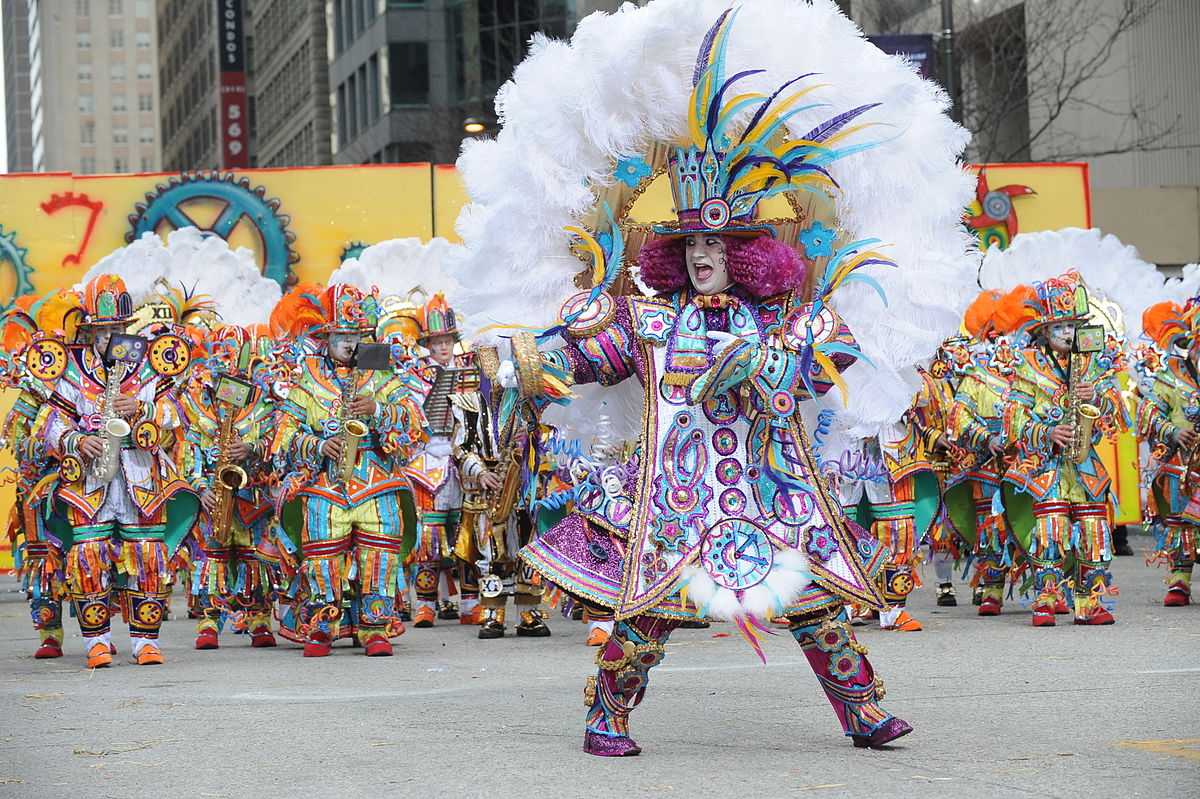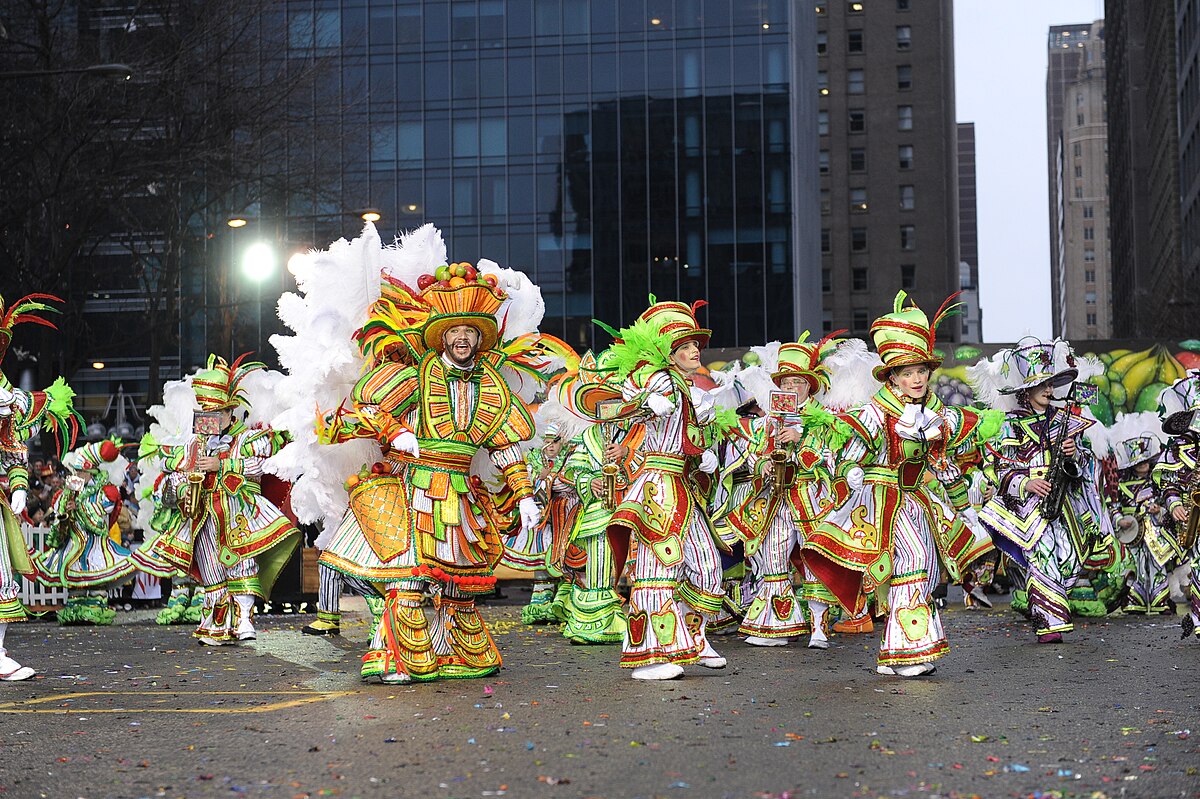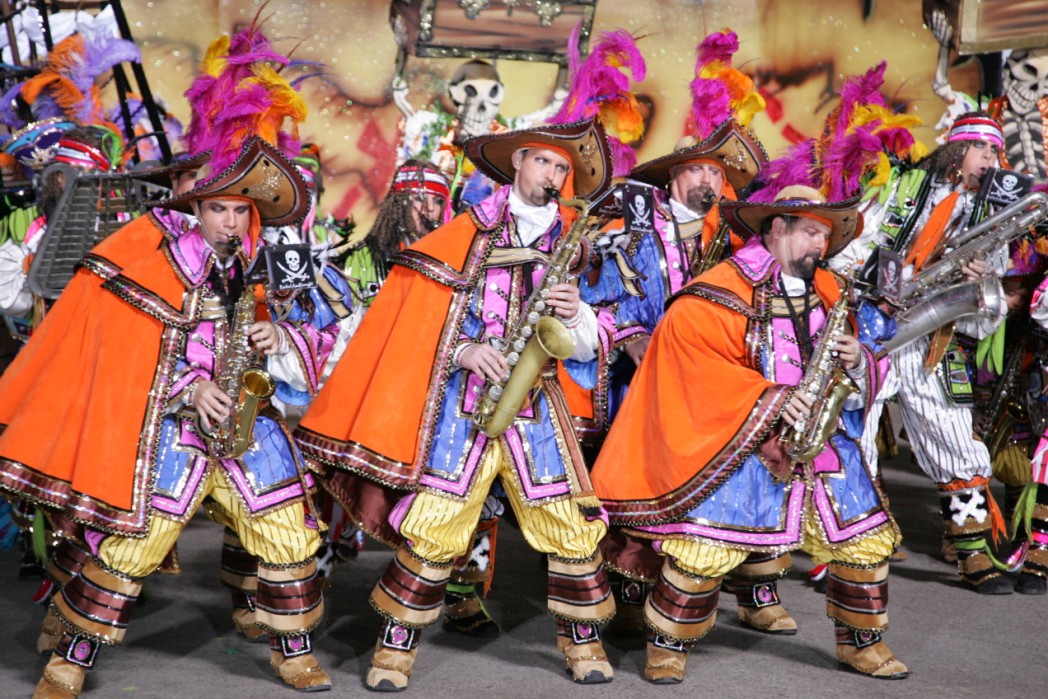 | ||
| Carnival in Berlin, Germany (source) |
Tomorrow, Tuesday February 9, is the day before Ash Wednesday. Known by
many names (Fat Tuesday, Mardi Gras, Shrove Tuesday, Pancake Tuesday,),
it is the day before the Christian season of Lent begins. It is the
culmination of the traditional Carnival season, celebrated in most
famously in New Orleans, and in many other places around the world. In
New Orleans, it is an exciting annual event marked by costumes, beads,
parties, parades and excessive eating and drinking. There are many local
customs and traditions around the world, and most are far more sedate,
but involve foods considered rich and decadent.
 |
| German Doughnuts, Similar to Pennsylvania Dutch Fastnachts (source) |
"Shrove Tuesday" is derived from the word shrive, meaning confession and absolution of sins. It is observed by many Christians, and is intended to be a day of reflection, examination of conscience, and asking for God's forgiveness and assistance to live a better life. Traditionally, Christians have observed the season of Lent, the forty days leading up to Easter, by engaging in fasting and prayer, giving to charity, and by living more simply in order to come closer to God. For example, Catholics fast during the day of Ash Wednesday, and eat a light meat-free meal for dinner. They also abstain from meat on Fridays during Lent. Many Christians observe Lent by eating more modestly, minimizing meats and sweets. Today many people give up something that they consider to be a "vice" for Lent, such as smoking, drinking or eating chocolate, and develop healthier habits as a result. Traditionally on Shrove Tuesday, people have indulged on fattening and delicious foods, such as doughnuts and pancakes, made to use up the last of the sugar, lard, butter and other fats, which would be avoided for the next several weeks.
 |
| Eating Donut by Ryan McGuire (source) |
In Southeastern Pennsylvania where I live, the Pennsylvania Dutch tradition of Fastnacht (or Fasnacht) Day is alive and well. It began with the original German settlers of this region, and today is enjoyed by people of various backgrounds. These doughnuts can be round, but are usually square, or triangularly shaped, and normally do not have a hole. Some recipes are made with mashed potatoes; some use yeast and some do not. They are usually dusted with powdered or granulated sugar. Some churches use Fastnacht day as a fundraising opportunity, selling the traditional doughnuts, and holding church socials. Variations of these doughnuts can be widely found in area bakeries and supermarkets, and someone invariably brings a bunch of these doughnuts to every workplace on Fastnacht Day!
 |
| Pennsylvania Dutch Kitchen (1942) Courtesy of Library of Congress |
There are other delicious doughnuts and similar foods that are traditional on Shrove Tuesday, including New Orleans' famous Beignets and the jelly-filled Polish Paczki. A wonderful article with historical information and traditional recipes for these and other Fat Tuesday delights is called Fat Tuesday: The Many Different Doughnuts of Mardi Gras. It is found on npr.org. Please click on the following link to this article: http://www.npr.org/2014/02/26/282908382/fat-tuesday-the-many-different-doughnuts-of-mardi-gras#fasnacht
 |
| Beignets and Coffee by Tahoemike10 (source) |
In The UK, Ireland, Australia and Canada, Shrove Tuesday is traditionally observed as Pancake Tuesday. Many Americans continue to also follow this custom, and numerous churches hold special pancake suppers in celebration. It is especially common among Episcopal churches. The following is adapted from an article which appeared in The Delineator in February 1921. It features some unusual pancake recipes and suggestions to give variety to Pancake Tuesday and to meals year-round.
"Pancake Tuesday" falls on February the eighth this year (1921), as the Lenten season begins on the ninth, ushered in with Ash Wednesday, the first day of fasting. It may be well to explain that this jolly-sounding name for the day before Ash Wednesday is now almost forgotten, as Mardi-Gras...,the French for "fat Tuesday" is the popular name and stands sponsor for the many Mardi-Gras carnivals held on that day.
 |
| Heart Shaped Pancakes -Photo by Cbaquiran (source) |
Such feasting and revelry have quite supplanted the baking of Shrove
Tuesday pancakes and having them ready to serve to the itinerant singers
who roamed through the streets on the night before lent. The revival of
this name gives the wide-awake housewife a good excuse to do a little
experimenting to see what can be done in the way of pancakes other than
the ordinary breakfast-table variety.
Potato Pancakes
A good way to begin is to introduce your family to the vegetable pancake served with the main course of the meal. The potato pancake stands out prominently in this list of vegetable pancakes and is always a favorite with the men of the family. With pot roast and plenty of brown gravy, there is little else to be desired at a meal than crispy-edged potato pancakes. (To make:) Pare, wash and put into cold water three large potatoes. Let soak overnight if convenient, but at least three or four hours. Grate them into a bowl and add one well-beaten egg, one-half cup flour and one teaspoon baking-powder. Season with salt and pepper and add milk to make a pouring batter. Bake like ordinary pancakes on a griddle and serve with sausage, stew or ham with a cream gravy. These potato pancakes are also good with syrup, sugar or jelly.
Sweet Potato Pancakes
Sweet potato pancakes are delicious when served with chicken or veal. The same recipe for white potatoes may be followed, or for a change, try finely-chopped boiled sweet potatoes stirred into an ordinary batter until it will take no more.
 |
| Photo by Holgers Fotografie (source) |
Tomato and Rice
Tomato and rice make such a delicious combination that it is well to try them in the novel form of a somehat thick pancake as an accompaniment to "Liberty Steak", which is the after-the-war name for "Hamburg". Place a portion of the steak on a tomato-rice pancake and pour a generous tablespoon of savory tomato sauce over all.
Corn Pancakes
Canned corn is excellent made into thick pancakes and served in the same way, as the tomato sauce beings out the flavor of the meat. This arrangement makes an attractive-looking platter for the table, as the meat cakes may be placed on the pancakes and the thick tomato sauce, garnished with parsley, used as a border.
Apple Pancakes
Apple pancakes as an accompaniment to roast pork or pork chops are always greeted as a welcome change from apple sauce. These are made in two ways, one by the addition of as much finely chopped raw tart apple as the batter will take. The other method results in a cake more like an apple fritter, as a thin slice cut from a pared and cored apple is taken up with each spoon of batter.
 |
| Poster 1918 (Courtesy of Library of Congress) |
Holland Pancakes With Sausage Meat
Just because the rolled pancake is generally associated with jelly or some other sweet filling, there is no reason to limit these fancy pancakes to the list of deserts. A popular tea-room has built up a reputation for a delicious breakfast dish which is nothing more nor less than a novel way of serving griddle-cakes and sausage. Here's the way it is done: A rather large, thin pancake is first brushed with fat from the pan in which the sausage meat has been cooking. This is an advantage in this as it saves butter! Then hot sausage-meat is spread over one side of the pancake and it is quickly rolled and laid on a hot platter waiting for its mate, as two of these constitute a portion. If there is not too much filling and the rolled pancake is laid with lapping side next to the plate, there is no chance of it unrolling. For luncheon or supper spread the pancake with creamed ham or chicken, a savory force-meat (chopped meat) or any other appetizing mixture made from left-overs. Roll each pancake quickly and keep at the door of the oven until all are ready.
 |
| Fort Kent, Maine. (vicinity). Mrs. [Leonard] Gagnon Making Buckwheat Pancakes Photo by: John Collier (1942) (Courtesy of Library of Congress) |
French Pancakes
The popular jelly-filled pancake, known as French pancake, is so casually made and so good that it should figure more frequently on the family table. Follow any good recipe for pancakes, spread each with softened tart jelly and roll while hot. Place side by side on a platter, lapped side down to prevent spreading, dredge with sugar and, last of all, with a red-hot wire toaster or fine broiler burn lines on the sugared pancakes, so that the brown lines show distinctly. For a change, flavor the batter with orange, spread with orange marmalade and mix grated orange-peel with the sugar sprinkled over the rolled pancakes. A hot jelly or marmalade sauce may be served with these pancakes, if desired. Or try making the pancakes as large as a dessert-plate, and, when five or six are ready, arrange like a layer cake with plenty of butter and scraped maple-sugar or jelly between the layers and a generous supply of syrup or jelly sauce to pour over each portion as it is cut like a pie.
 |
| source |
Alsatian Pancakes
Make a batter of one-half cup milk, three well-beaten egg-yolks, two teaspoons sugar, two tablespoons melted fat, one-half teaspoon salt and one cup flour. Beat thoroughly and add another one-half cup of milk and the stiffly beaten whites of the three eggs. More flour or milk may be needed to make the batter just right. Grease bottom and sides of a large shallow frying-pan. Pour in the batter and tilt the pan in all directions, so that a rim of batter is formed all around the edge of the pan. When firm, remove to hot oven until center puffs and edges become crisp. To serve, dredge with powdered sugar and squeeze over it some lemon-juice. Break down the puffed center of the pancake, fold one side toward the middle, add more sugar and lemon-juice and then fold over the other side. Cut in three or four portions. This is a splendid dessert to serve with coffee and is a great favorite with men.
Adapted From An Article By Helena Judson From The Delineator, February 1921
 |
| Mrs. Orville White Making Pancakes For Breakfast Near Northome, Minnesota Photo by Russell Lee (1937) (Courtesy of Library of Congress) |























